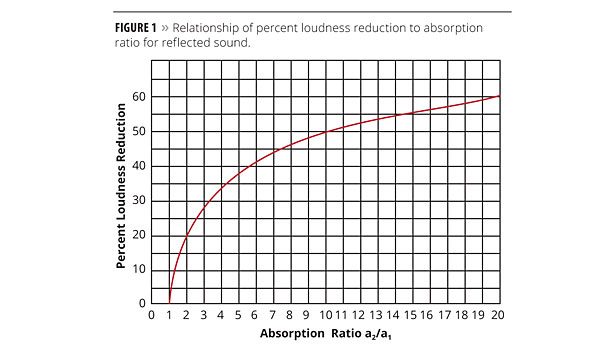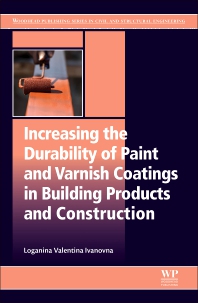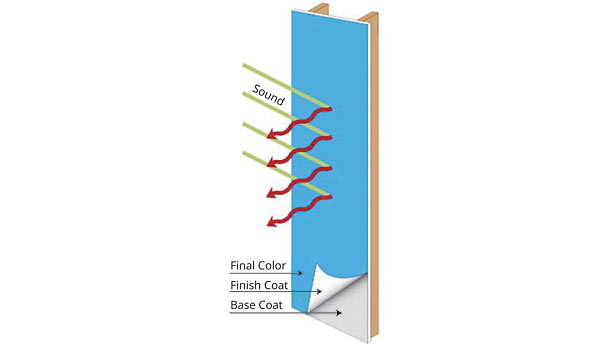Sound-Reducing Paint Addresses Building Noise Issues






Soundproofing methods for multi-family residential and multi-tenant commercial buildings have frequently relied on additional construction materials such as layers of ceiling, floor and walls separated by sound-absorbing clips and other devices. This approach is often cost prohibitive and commonly leads builders to soundproof only to the bare minimum as required by code. Sound-deadening paint, on the other hand, is both less expensive and easier to install than traditional soundproofing material and has been found in lab tests to be a persuasive alternative.
This article covers: fundamentals of wall sound reduction; lab and testing information with regard to sound-deadening paint; comparison of paint to traditional soundproofing material and methods; and general paint information and application best practices.
Wall Sound Reduction
Sounds that are not absorbed by walls and other surfaces are the source of noise levels in a building; the less sound absorbed, the more noise, and vice versa. When the space is treated with soundproofing materials, the sound build up can be reduced or eliminated entirely. Sound level differences between untreated space and acoustically treated space are described as Noise Reduction (NR).
Treating a noisy, reverberant space with acoustical soundproofing material can reduce sound buildup that occurs due to hard and/or porous surfaces. In a “before and after treatment” comparison, the decibel level can be calculated. Figure 1 can be used to compare how the sound reduction will be perceived.
Lab Results
A sound-deadening paint, such as Coat of Silence™, uses a two-step application process consisting of a base coat and a finishing coat. The base coat forms nano membranes that create sound-absorbing and sound-deflecting barriers. The finishing coat has a similar binding formula and helps form a continuous membrane across a wall surface.
Independent testing by Orfield Acoustical Lab and Riverbank Acoustical Lab validated the effectiveness of sound-deadening paint. Testing results for Coat of Silence showed compliance with both ASTM E90-09 and E413-04, as well as UL requirements. Attenuated sound improvement from these tests was measured, and the results are shown in Table 1.
Comparing Methods
Traditional soundproofing often requires replacement of existing drywall or drywall rehab in order to add a sound-reduction membrane. In both of these cases, skilled tradesmen are required and the cost per square foot can be anywhere from $5 to $15 dollars. Thereafter, the walls need to be primed and painted.
With sound-deadening paint, there is much less work, less so than any sound-reduction solution in the marketplace. No construction materials are required and it can be applied with a paint sprayer by one person with standard trade skills. Moreover, the paint can be applied to both existing and new walls, and a final paint color can be applied without further priming. Soundproofing paint can be applied to meet various textures and thicknesses to meet specific needs of architectural and or design specifications.
General Information
A sound-deadening paint such as Coat of Silence has the following properties:
STC Rating:Can increase room/partition by 3 to 7 points, depending on room construction and application methods.
Density:
Base Coat – 9.45 ± 0.2 lb/gal
Finish Coat – 9.85 ± 0.2 lb/gal
Dry Content:
Base Coat TNV – 64.28% (62 ± 2)
Finish Coat TNV – 61.61% (62 ± 2)
Cleaning and Dilution: Water
Application:Sprayed
Application Temperature:Between 50 °F and 90 °F
Spray Nozzle Specifications:A 317 tip is recommended
Coverage:
Base Coat – One gallon covers approximately 100 sq ft
Finish Coat – One gallon covers approximately 100 sq ft
Example: A job requiring 500 sq ft of coverage would require 10 gallons of product, 5 base coat and 5 finish coat.
Length of Storage: Original, unopened containers may be stored up to 12 months. Open, unused material should be disposed of after a 6-month period.
Storage Temperature: Room temperature (between 50 °F and 90 °F).
Flammability: Flame Spread: 15; Smoke Developed: 10 n
Looking for a reprint of this article?
From high-res PDFs to custom plaques, order your copy today!








